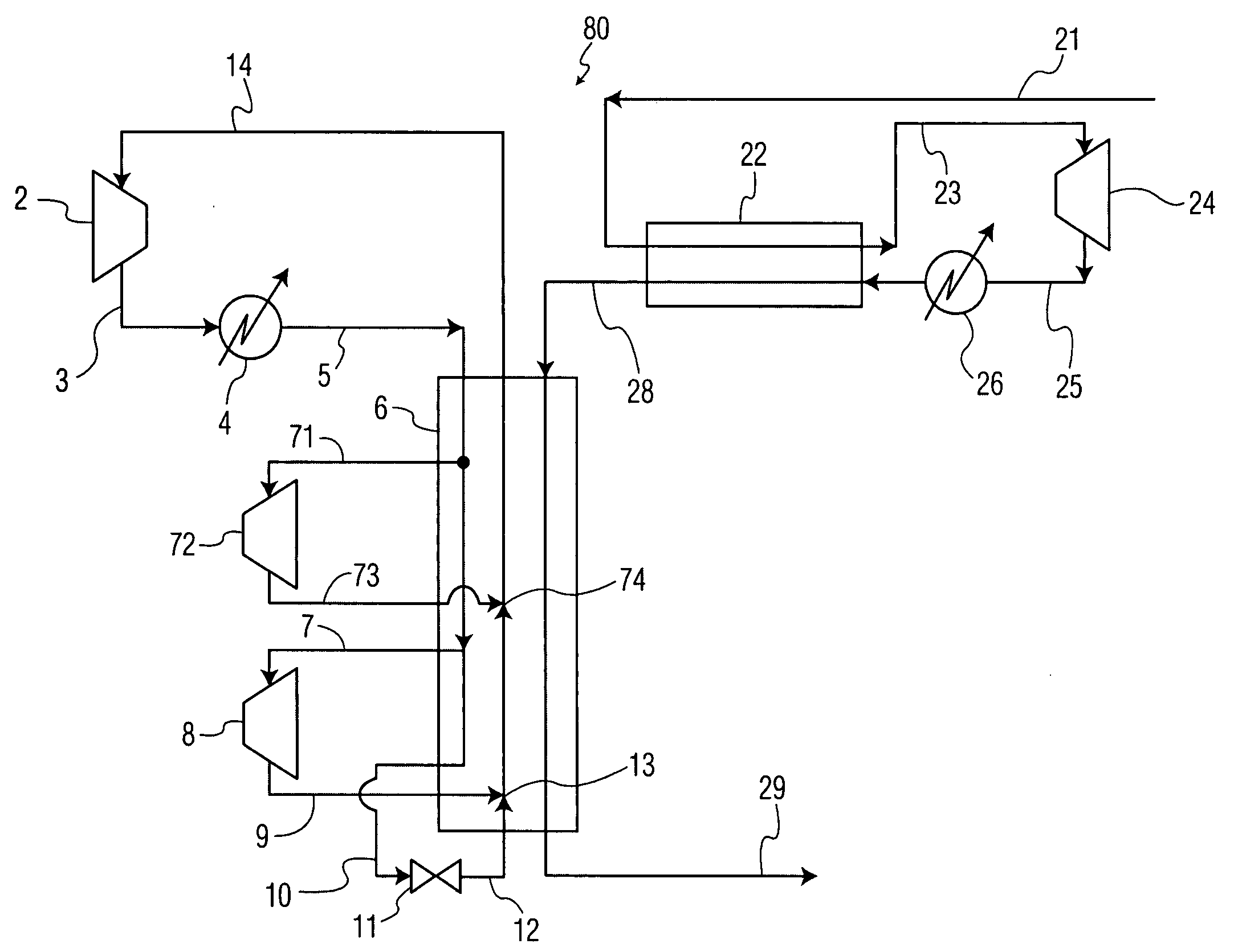Equipment and process for liquefaction of LNG boiloff gas
- Summary
- Abstract
- Description
- Claims
- Application Information
AI Technical Summary
Benefits of technology
Problems solved by technology
Method used
Image
Examples
example
[0036]kgmoles / hr=kilogram moles per hour (flow)
[0037]° C.=degrees Celsius (temperature)
[0038]bar=bar (absolute pressure)
[0039]composition %=molar percentages
[0040]FIG. 5 shows a process for the reliquefaction of boiloff gas 21 evolved from the cargo tanks of an ocean-going LNG transport vessel, where the boiloff gas evolution rate is 395.9 kgmoles / hr, reaching the deck at a temperature of −130° C. and a pressure of 1.060 bar. The boiloff gas composition is 91.46% methane; 8.53% nitrogen; and 0.01% ethane. The boiloff gas is warmed in heat exchanger 22 and stream 23 exits at 41° C. and 1.03 bar. Stream 23 enters boiloff gas compressor 24 and is compressed to 2.3 bar and 122° C. Stream 25 is cooled in aftercooler 26 to 43° C. and 2.2 bar. Typically, cooling water is the cooling medium in indirect heat transfer with the boiloff gas for this aftercooler and other aftercoolers in the process. The cooled, compressed gas 27 enters heat exchanger 22 in indirect heat transfer with stream 21,...
PUM
 Login to View More
Login to View More Abstract
Description
Claims
Application Information
 Login to View More
Login to View More - R&D
- Intellectual Property
- Life Sciences
- Materials
- Tech Scout
- Unparalleled Data Quality
- Higher Quality Content
- 60% Fewer Hallucinations
Browse by: Latest US Patents, China's latest patents, Technical Efficacy Thesaurus, Application Domain, Technology Topic, Popular Technical Reports.
© 2025 PatSnap. All rights reserved.Legal|Privacy policy|Modern Slavery Act Transparency Statement|Sitemap|About US| Contact US: help@patsnap.com



